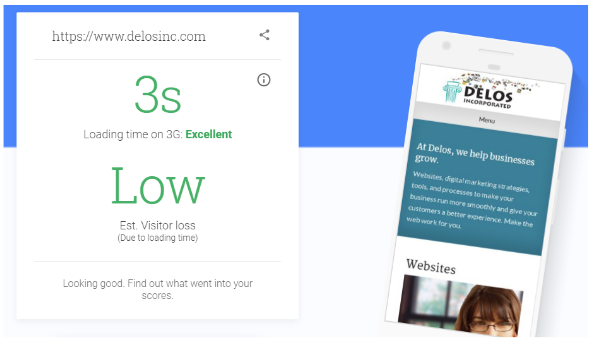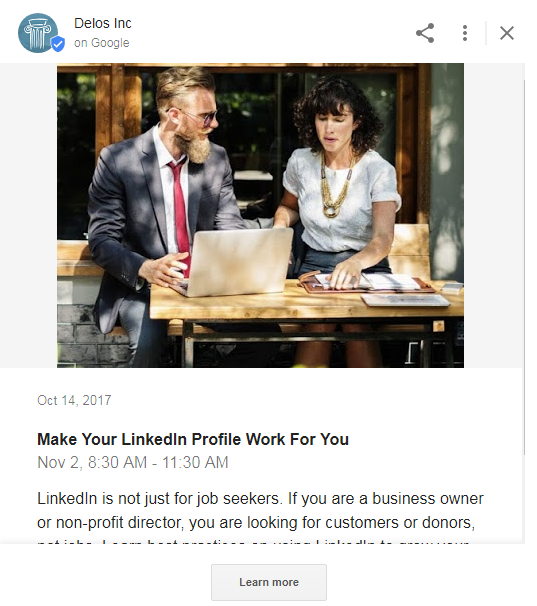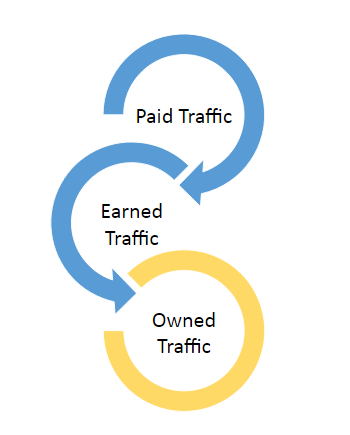There have been a lot of changes this year to social media, email marketing, web search and video. During our webinar on August 14th we discussed those changes, how it affects your digital strategy, and how you can use this information to finish the year strong. Check out the video replay, or see the summary of what we discussed below.
Website
Your website is still important in 2018, and we take a look at the changes Google has made in three areas: Mobile Index, HTTPS, and Speed. The other big news that affects your website was the GDPR regulations that went into effect in May.
Mobile
More web viewing and search happen on mobile devices than on desktops today. Google is in the process of moving away from a desktop index plus a mobile index, in favor of a single mobile-first index. Best practice is to have your website use responsive design with the same content available to desktop and mobile viewers.
HTTPS
Notice that little green lock icon in your browser search bar that says Secure? That means the website is using the HTTPS protocol which encrypts the traffic between website visitors and the web server. Google made a change in July to Chrome which marks all websites using plain HTTP (not HTTPS) as “Not secure.”![]()
Learn more about why web security is important for small businesses too. We also use and recommend Sucuri (affiliate link) for our customer sites. In addition to the web application firewall, they include and manage the SSL certificates, and can give your site a performance boost as well. If you are hacked, they will also clean the site for you.
Speed
Google also announced this year that it is including site speed as a ranking factor. Most mobile visitors abandon a web page if it takes more than 2-3 seconds to load. So, what would make your website run slow? Here are a couple of possibilities:
- Images are too large
- If you’re using WordPress, running too many plugins or a theme that is bloated
- Your hosting server doesn’t have enough resources, or too many sites competing for the same resources
You can test your site for free at https://testmysite.thinkwithgoogle.com/

GDPR
GDPR stands for the European General Data Protection Regulation. This is a standard for data collection, storage, and privacy for all individuals in the European union. These regulations create greater transparency about how visitor data is being used. These regulations don’t affect businesses in the U.S. unless you have European visitors. However, transparency is a good business practice and it is probably a matter of time before standards of this type are adopted for U.S. consumers. The newest WordPress updates, for example, now give you additional privacy options, and your site should always have a privacy policy.
Google My Business
Location based searches, or near-me searches have skyrocketed. Google My Business gives you the opportunity to impact how your business is found in Google search and maps. When you use Google My Business you can change your business description, services, and can now add posts.
Maybe you claimed your business listing a while ago, and if you didn’t you should stop and do that now! Google has added a lot of new features for managing your listing and increasing your visibility. For example, Posts lets you add specials, offers, products, and events to your Google listing including call-to-action buttons. These posts appear right in search results and on the map. You can even add videos to posts now. This is all free to Google My Business users. If you haven’t done so, get the mobile app so you can respond to reviews, add photos, and update posts on the go. This is a great tool to promote your business, so don’t forget to include it in your content planning calendar.

Facebook was in the news a lot this year with changes to the algorithm and plenty of scandal regarding user data privacy. Here are some things you may have missed in Facebook marketing:
Facebook Algorithm
At the beginning of the year Facebook changed the News Feed algorithm to prioritize family and friend posts over business or organization posts. Since this change took place, the organic reach of businesses has declined again. Businesses need to view Facebook as an advertising platform, but this is still a good way to drive traffic and new business. Just make sure you have a strategy and track the returns you are getting from your investment.
Facebook Scandal
Facebook faced a lot of scrutiny this year with the Cambridge Analytica privacy scandal resulting in the trending hashtag, #DeleteFacebook. If you aren’t familiar, this scandal involved collecting and sharing the personally identifiable information of at least 87 million Facebook users in a way that Facebook described as “inappropriate.” This situation brought to light the importance of trust and transparency with an organization.
Facebook Info and Ads
As part of its transparency effort, Facebook recently added a new tab, Info and Ads, that allows you to see all the paid ads a business or organization runs as well as information about the business like the date the page was created. This also can be a useful research tool for small businesses to see what types of ads others are running.
Custom Audience Targeting
You may already use Facebook paid ads as a way to generate business and target your specific audience, but with the push toward greater security and privacy, you now have to certify how you are connected to those Facebook users.
Cross Post on Facebook and Instagram
For those who don’t know, Facebook actually owns Instagram. A great feature to build your audience on both platforms is the ability to cross post from Instagram to Facebook or vice versa. You can also manage paid promotions on both Instagram and Facebook with the Facebook Business Manager.
Facebook Live
There has been a big push toward video in the past couple of years because videos receive more engagement and Facebook Live is another way to grab your prospects’ attention. There are a couple considerations to make when you create Facebook Live Videos.
- Most people watch Facebook videos without sound, so subtitles may be necessary to get your message across.
- Create engaging content that gets a discussion going.
- Once you’ve created your content, look at the engagement generated. What works? What doesn’t?
- Create hype leading up to your Facebook Live video. This is a great way to get more engagement.
If you aren’t yet using video to promote your business, you should be!
While Facebook and YouTube remain the most used social platforms, Instagram is the up and comer in the social media world. Who is your target audience? Most Instagram users are between 18-29 years old and there are more women than men.
If you are just getting started with Instagram there are some key things you should know to make the most out of your social strategy. The first thing that is unique to Instagram is you can only have one URL link in your bio, and you can’t add links to your Instagram posts. The other thing you should know is Instagram relies heavily on hashtags.
If you already use Instagram, there are some cool new features worth mentioning.
Highlight Stories on Your Profiles
Instagram recently rolled out a new feature where you can actually pin specific stories, so that they permanently stay on your profile rather than disappearing after 24 hours like normal. This is a great way to highlight specific events you host or create an, “About Us,” video.

Topic Channels
The Explore page in Instagram is now organized by Topic Channels like Travel, Food, Sports, etc. When you click on a topic channel, you will see related hashtags. This can be a good way for you to find hashtags relevant to your business posts.
Call to Action Buttons
Instagram now lets you add call to action buttons like, “Get Tickets” or “Reserve Your Spot,” in your posts. You can also create a “Shop Now” integration by adding products to your business Facebook Page Shop Section and linking the accounts. You can also link your Shopify store to Facebook to get the Shop Now buttons on your product posts.
IGTV
In June, Instagram launched a new app in an effort to compete with video apps like YouTube. IGTV lets you add vertical videos to your page up to one hour long. If you have information about your business that you just can’t get across in the short, stories on Instagram, IGTV let’s you create your own channel with quality content that gets your message across.
The Instagram Algorithm
Even though Instagram is owned by Facebook, their algorithm operates a little differently. The algorithm doesn’t prioritize family and friends over businesses, but it takes into consideration what your likes are and the relationship of the account to you. More recent posts still get priority over older ones, so it is important to create engaging content on a regular basis.
Did you know over 80% of B2B leads generated on social media come from LinkedIn? LinkedIn does have company pages, but your personal profile and use of LinkedIn is the key to generating B2B leads with LinkedIn. You should still create a company profile too.
LinkedIn added a couple new features this year that are worth noting.
- You can add native videos to LinkedIn now and also decorate photos and videos with stickers.
- There is a new “find nearby” feature that allows you to see LinkedIn users when this setting is turned on for you and others at the same time. This is a great feature for networking at events.
- You can “Send kudos” as a show of appreciation that shows up in your timeline.
Email Marketing and Constant Contact

There are three types of traffic that drive your business on the web: paid traffic, earned traffic, and owned traffic.
Your business email list is a form of owned traffic. You already established a relationship with these customers and prospects, now it’s time to maintain the relationship through effective email marketing.
An important consideration is most people open emails on their phone. The top reasons people unsubscribe from your emails are the content isn’t relevant to them, it doesn’t work well on mobile, or the email is too long.
As a Solution Provider for Constant Contact, we thought you’d be interested in some of the If exciting new features they added this year to help you personalize and automate your campaigns.
Constant Contact and Facebook Lead Ads Integration
A Facebook Lead Ad is an ad where your information gets pre-filled into the form when you click on the ad. This makes it convenient for the user, but a business when you used lead ads previously, you would have to download your leads and then upload them to Constant Contact. Now, you can connect your Constant Contact account to Facebook lead ads and automatically add leads to a list in Constant Contact.
Click Segmentation
With click segmentation, when someone clicks a particular link within an email, you can automatically add them to a separate email list for follow ups. This helps you narrow down the interests of your audience and tailor information accordingly. People want to see what is relevant to them.
Shopify Integration
Constant Contact now integrates with Shopify f you use that platform for e-commerce. You can now sync your contacts, product information, and photos to your Constant Contact email campaigns.
Donation Campaigns
If you run a non-profit, the new Donation Campaigns in Constant Contact are perfect for you! With a donation campaign you can solicit donations via email and add donators to separate email lists for follow up emails.
Putting it All Together
There have been lots of changes, and you don’t have to be on every platform to have a successful digital marketing strategy. Remember to target your ideal client, understand what problem you are solving, and use a calendar for consistency of implementation.

